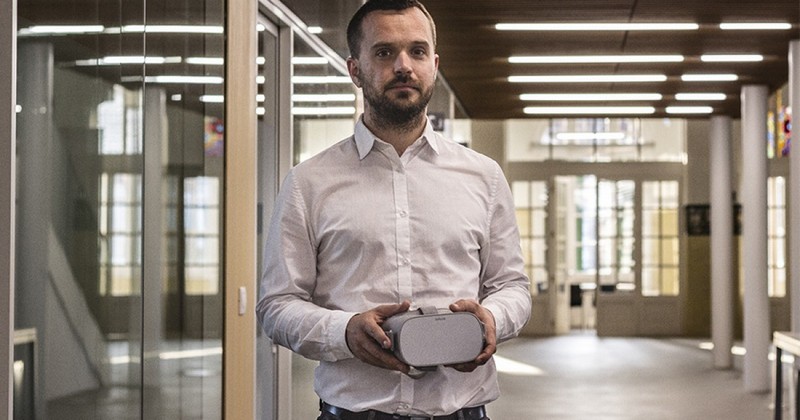Xavier Palomer: "Many disorders can be treated with Virtual Reality".

The CEO of Psious talks to us about the benefits of Virtual Reality applied in mental health.
With the development of new technologies, new ways of experiencing reality appear. In fact, nowadays the possibility of creating very realistic digital worlds is a constant in the world of entertainment thanks to advances in the design of three-dimensional environments. But what is not so well known by the general public is that these resources also have a very powerful therapeutic potential. have a very powerful therapeutic potential.
However, this lack of knowledge is changing rapidly, and more and more mental health professionals are taking advantage of Virtual Reality to help their patients with different emotional and behavioral disorders. The creation of Psious by a Spanish team of developers is an example of this.On this occasion we interviewed its head, Xavier Palomer.
Interview with Psious: the benefits of Virtual Reality in mental health.
Xavier Palomer Ripoll is the CEO and founder of Psious, the first Virtual Reality platform oriented towards the treatment of mental health problems.
Psious was founded in Barcelona in 2014, and since then it has been creating content and optimizing its operation with patients, as well as expanding through clinics and psychology practices in many countries; and all of this, counting with the participation of mental health experts. It is currently possible to contact this platform to find out which is the nearest psychologist using this technological solution in patient care.
In this interview, Palomer talks to us about the positive effects of the use of Virtual Reality in psychotherapy services and psychological assistance.
In short, what is Virtual Reality applied to psychotherapy, as you understand it from Psious?
Virtual Reality (VR) is a tool that allows for more effective and efficient therapeutic interventions, that is, scientific studies have shown that results are obtained in less time compared to traditional therapies. This is because VR allows not only to reproduce real-life situations, but also to adapt and control virtual environments to meet the individual needs of each patient.
What types of psychological disorders respond particularly well to treatment with this technological solution?
Multiple disorders can be treated with Virtual Reality. The Psious library allows to intervene in more than 20 different pathologies.
The results are especially effective in the treatment of anxiety disorders such as specific phobias (agoraphobia, claustrophobia, fear of heights, fear of flying, etc...) and generalized anxiety, as well as Obsessive-Compulsive Disorder, post-traumatic stress disorders, and many more.
In the case of the treatment of phobias, one of the forms of therapy in which Virtual Reality is most commonly used, what are the main advantages of this method compared to the use of imagination or physical and real phobic elements?
There are many advantages! The use of imagination requires a great effort on the part of the patient, taking into account that imaginative capacities vary from person to person. This means that some patients take time to achieve the expected results.
On the other hand, in vivo exposure, i.e. exposure to real phobic elements, may be perceived as too intense an experience by some patients, which makes them uncomfortable with it, negatively influencing the outcome of the therapy.
Virtual Reality therapy solves these problems. In addition, it allows to be in the privacy of the therapist's office and provides greater control of the phobic stimuli, adapting the therapy to the needs of each patient. For all these reasons, studies agree that VR therapy is the therapy of choice for patients.
What are the most important factors that contribute to an immersive and realistic Virtual Reality experience in a 3D environment?
Virtual Reality glasses have screens that emit an image in front of the user's eyes, and register the movement of the head, allowing to see in all directions and thus covering the entire visual field. This generates a sense of immersion and a sense of presence in the patient, that is, the feeling of being present and immersed in the situation in question. These are the two key components of this technology that are leading VR to be increasingly incorporated in different healthcare fields.
In which regions is it possible to count on Psious' technological solutions in terms of Virtual Reality?
More than 2000 therapists and health professionals in more than 60 countries around the world have incorporated Psious in their practices. Anyone can contact us to find out if there is a specialist in your region using Virtual Reality in their practice.
(Updated at Apr 12 / 2024)